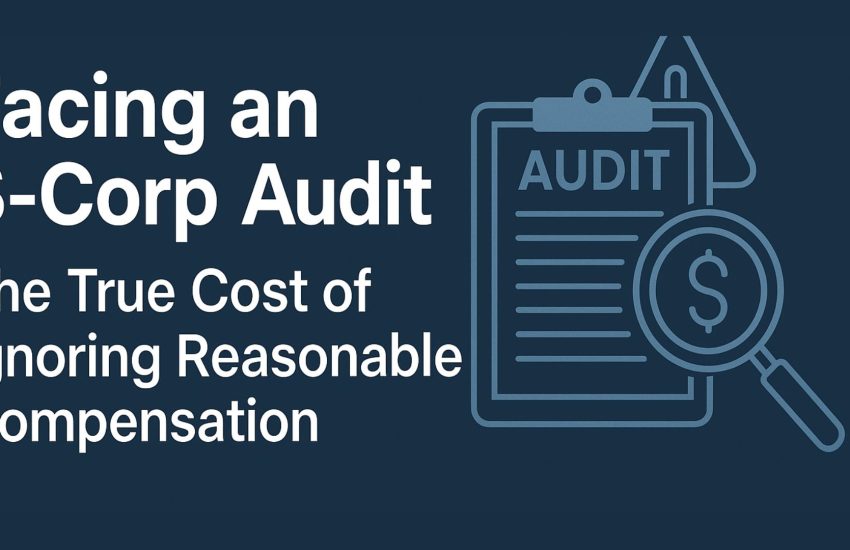5 Q3 Moves to Reduce Tax Exposure and Strengthen Your Construction Business
As a contractor or subcontractor, Q3 isn’t just about surviving the summer heat and hitting your job deadlines—it’s also a golden opportunity to tighten your financials, reduce tax exposure, and make strategic moves before year-end chaos hits.
By now, you’ve got six months of performance under your belt. That’s enough real data to make smart, proactive decisions—not reactive ones. Whether you’re dealing with crews, trucks, tax payments, or your retirement plan, now’s the time to review the essentials before Q4 arrives.
Here are five actionable steps to take in Q3 that can directly impact your profitability, compliance, and long-term planning.
1. Pay Your Q3 Estimated Tax (Due Sept. 15)
Mid-September marks the third major estimated tax deadline for the year. By this point, you’re far enough into 2025 to evaluate how your actual profits compare to your earlier projections.
Why this matters:
- If Q1 and Q2 outperformed expectations, you may need to increase your Q3 estimated tax payment to avoid underpayment penalties.
- If profitability dipped (e.g., due to weather delays or material cost spikes), you may be able to dial it back—keeping more cash in your pocket until Q4.
Pro tip:
Don’t blindly repeat last quarter’s voucher. Ask your CPA to run a mid-year tax projection using your current job costing and P&L. That simple check-in could help you avoid interest and penalties come next spring.
2. Heavy Vehicle Use Tax (Form 2290) is Due Sept. 2
If your company uses trucks weighing 55,000 lbs or more (think dump trucks, concrete mixers, lowboys, etc.), the IRS wants its money. Form 2290 is due every year by August 31 for vehicles in service during July—but because of the calendar this year, the 2025–26 deadline is actually Tuesday, Sept. 2.
Who this applies to:
- Contractors using heavy equipment for excavation, grading, hauling, or material transport.
- Anyone registering new trucks this summer—they must be reported by the end of the month after they go into use.
What to do:
- Confirm VINs and weight classifications.
- File Form 2290 electronically through an IRS-approved provider.
- Pay the fee (usually $100–$550 per vehicle).
Don’t miss this one. It’s a small task with annoying consequences (delays at the DMV, denied registrations, penalties).
3. Want a Safe Harbor 401(k)? Deadline to Set Up Is Oct. 1
Thinking about setting up a company retirement plan with a fixed match for your team? A Safe Harbor 401(k) could be the tool you need to keep key employees loyal, reduce your tax burden, and put your business on a more stable long-term financial footing.
Why act now:
The IRS says Safe Harbor plans must be set up and running for at least three months before year-end. That means October 1, 2025 is your drop-dead date.
Why it’s worth considering:
- Contributions are deductible.
- Owners and highly compensated employees can contribute up to $23,000 ($30,500 if age 50+).
- It avoids annual non-discrimination testing headaches.
Next steps:
Talk to your tax advisor and retirement plan administrator. Getting this started in Q3 gives you time to educate your team and integrate payroll deductions before the holiday season.
4. Run a Mid-Year Tax Projection—Especially if You’re Buying Equipment
If your business is planning to buy a new excavator, skid steer, or fleet vehicle before year-end, timing matters. The IRS lets you write off certain qualifying assets under Section 179 or bonus depreciation—but only if the item is placed in service by December 31.
Here’s why Q3 is critical:
- You can evaluate whether buying now or in Q4 gives the better tax result.
- A mid-year projection helps you see if you’re better off deferring the expense for cash flow reasons.
- If your state doesn’t conform to federal depreciation rules, that planning needs even more lead time.
Bonus tip:
The sooner you place equipment in service, the sooner you can begin using it to increase job efficiency. That could give you a leg up for the fall construction rush.
5. Review Your Insurance and Bonding Coverage Before Renewal Season
Many general liability and workers’ comp policies renew in October. That makes August and September the ideal time to sit down with your insurance agent and bonding rep to:
- Review claims history and loss runs.
- Adjust coverages for new revenue forecasts or job scopes.
- Look at EMR (Experience Mod Rate) and whether recent safety efforts are showing up in the data.
- Prepare updated WIP reports and financials for bonding capacity reviews.
Why this matters:
In construction, insurance and bonding aren’t just compliance items—they’re your license to win work. Tightening up your documentation now can result in lower premiums, higher bonding lines, and better competitiveness during bid season.
Final Thoughts
Q3 is often overlooked in favor of the fiscal crunch of year-end, but that’s what makes it powerful. With six months of performance data and a little breathing room before the holidays, it’s the best time to make course corrections and get strategic.
Contractors who act now won’t just reduce surprises at tax time—they’ll put themselves in a stronger position to win jobs, retain employees, and build a more resilient business.
Sincerely,
W. E. Stevens, PC
Serving you through a thoughtful client experience, wise long-term perspective, and very experienced staff



